This is an old revision of the document!
BIOS-related FAQs
How to find out the current BIOS version?
Start the PC and press the [DEL] or [F2] key to enter the BIOS setup program. The BIOS version is shown in the second line on the main screen.

How to flash BIOS under Windows?
First please download BIOS from our download page, then step by step follow the below instructions.
Please double check that all drivers are installed.
- Please use zip application to extract BIOS file.
- Right-click on the BIOS file and select “Run as administrator” option to start flash tool.

- Please press any key to continue when the below page pops out.
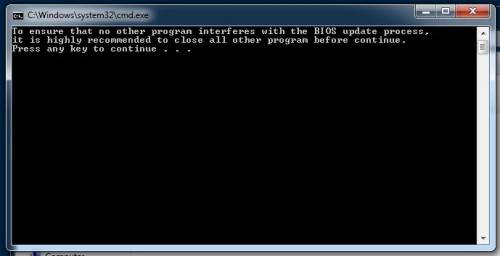
- Wait for the update to complete and don’t close the window.
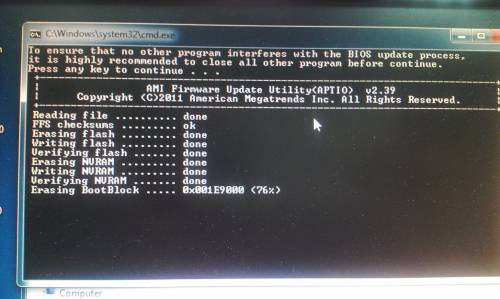
- After flash completed the computer will automatically reboot, please press keyboard “F1” button to continue and press “Del” button to enter BIOS setup menu.

- Please press keyboard right arrow button to switch function to the “Save & Exit” page and select “Load Defaults Settings” option, then select “Yes” to load optimized defaults.
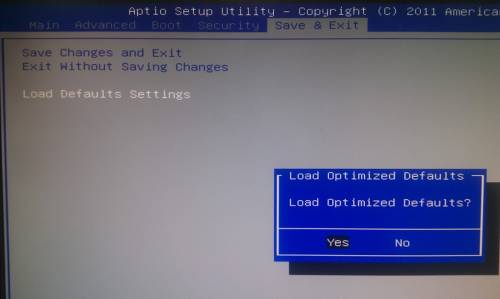
- Please select “Save Changes and Exit” option, and then select “Yes” to save configuration.
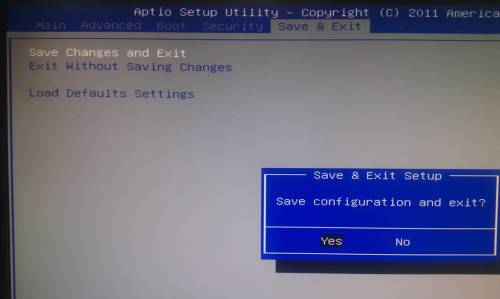
- After exiting Bios, the unit will restart.
- Finished.
How to update the BIOS version?
With DOS operating system (recommended)
- Please go to the Shuttle download area and download the appropriate BIOS version.
http://global.shuttle.com/download/download - Unpack the ZIP file into an empty folder.
- Copy the subfolder “DOS” to a bootable USB stick with DOS operating system.
- Boot from the USB stick and change to the subfolder “DOS”.
- Execute the FLASH.BAT file.
- The update process starts automatically. Finally, the operating system will reboot automatically.
- After reboot please enter the BIOS setup program by pressing the “del” or “F2” key and load “Default Settings” and save the changes.
With Windows operating system
- Please go to the Shuttle download area and download the appropriate BIOS version.
http://global.shuttle.com/download/download - Unpack the ZIP file into an empty folder on your hard disk.
- Explore the folder accordingly to your Windows version (32 bit or 64 bit).
- Please execute the EXE file with full administrator rights.
- The update process starts automatically. Finally, the operating system will reboot automatically.
- After reboot please enter the BIOS setup program by pressing the “del” or “F2” key and load “Default Settings” and save the changes.
How to make a bootable USB flash drive?
Warning: Please be sure that there are no other USB devices connected to your system during formatting like external hard disks, external optical devices or other USB flash drives. This ensures that you only format the selected USB flash drive.
The “BootFlashDos” tool is available at http://www.shuttle.eu/fileadmin/resources/support/faq/attachments/BootFlashDos.zip or http://www.gocoding.com.
- For Windows XP: please run BootFlashDos.exe
For Windows Vista/Windows 7: please run BootFlashDos.exe by selecting it with the right mouse button and select “Run as administrator”.
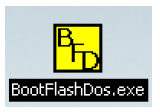
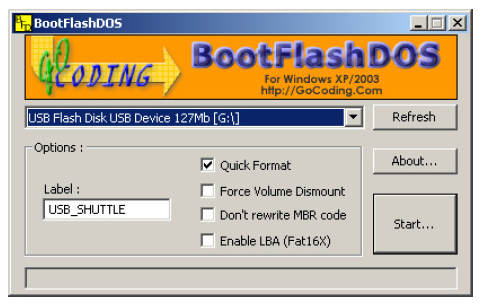
- Select your USB flash drive. If necessary, click Refresh to update the device list.
- Select Quick Format.
- Press Start and confirm the following Warning popup.
How to copy files to the created bootable USB flash drive?
- Open your Windows Explorer and select your USB flash drive.
- Copy AWDFLASH.EXE and the latest BIOS Version to your USB flash drive.

How to boot from USB flash drive?
- Insert your USB flash drive to your USB Ports.
- During boot process press ESC (or F11 or F7) to enter the boot menu.

- Select USB-HDD or USB-ZIP (depending on the model of the USB flash drive, it may vary). On our newest XPC Barebones, you will find your USB flash drive, if detected correctly, listed right below your hard disks.
- Press Return to boot from your USB flash drive.
How to perform a firmware update with the embedded EFI Shell?
Many modern PCs (like XS35V4 and XS36V4) use a pure UEFI firmware instead of a traditional BIOS for hardware initialising.
The terms UEFI firmware and BIOS are still used synonymously.
- Please download the latest firmware and copy the unpacked files to a USB stick with FAT(32) file system.
- Plug in your USB device, power on your PC and press the F7 key until the screen Please select boot device appears.
Select UEFI: Built-in EFI Shell and press the Enter key.
The system will now boot the embedded EFI Shell and prompt the Device Mapping Table.
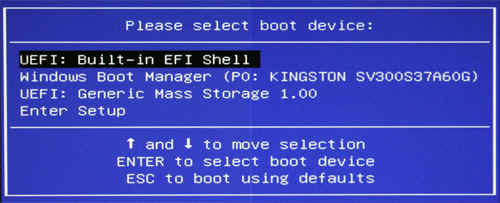

- In order to access the USB device, identify the correct ID for the Removable Hard Disk from the Device Mapping Table. Please then type fs2: and hit Enter afterwards. If required, please change directories where the firmware update files are saved.The command to type is cd xs36. The files in the current folder can be listed using the dir command. Finally run the batch file flash64.nsh. Next, the firmware update process starts automatically and restarts the system afterwards.

Notice: After performing a firmware update, please always ensure to have the operating system in use also selected in the firmware setup.
To do so, please press the “Del” key while booting to enter the boot menu. Then navigate to “OS Selection”. In case of a wrong setting here, not only the boot process of the existing Windows installation will fail, also changes on the specific drive may occur making booting impossible.
How to update AMI BIOS in Windows?
- Please go to download page and download AFUWIN
- Extract and run the AFUWIN as administrator
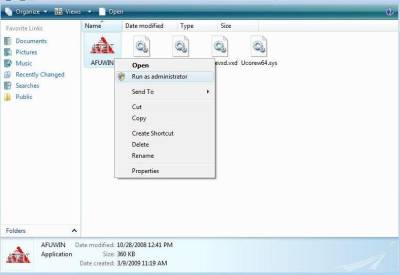
- Check the warning and close all other programs then press OK
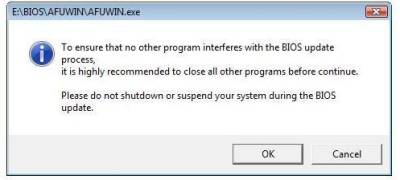
- Choose Open file
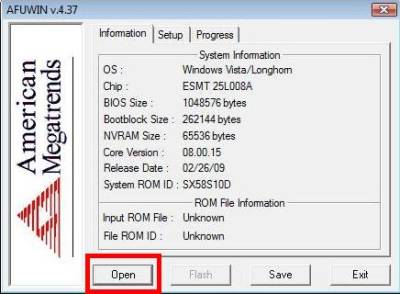
- Choose your Bios then enter Open

- Check the Program All Blocks option then press the Flash button

- Flash finish
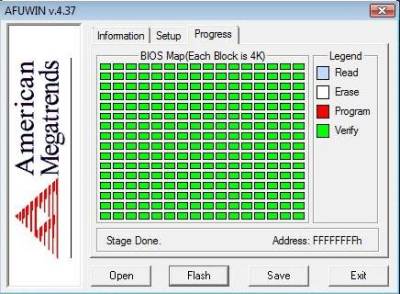
- Reboot your machine then enter Bios and Load Default Settings
- SAVE to CMOS and EXIT
Where and how can I clear CMOS?
All settings and parameters defined in BIOS are stored in CMOS. To delete these settings and reset CMOS, follow the instructions below.
The instructions show examples of where the button or jumper to clear your machine's CMOS is located on different models. If you can't find the button/jumper on your model, more detailed information on type and position can be found in the Quick Guide (QIG) that came with your machine.
Remove the mains plug and reset/press the jumper/button for approx. 10 seconds. You may need to use a pointed object such as a ballpoint pen to push the button. After clearing CMOS, start up the computer and load “Optimized Defaults” in BIOS, save and restart.
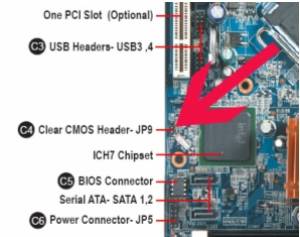
Clear CMOS jumper on the mainboard
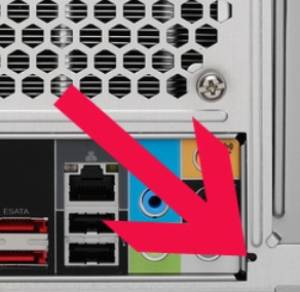
Clear CMOS button on the back of the machine (small opening bottom right)

Clear CMOS button on the back of the machine (small opening top left)
What is "Unknown flash type" when updating BIOS?
That is a feature on the mainboard that protect the BIOS from being flashed accidentally, it is called BIOS flash protection. Please disable this function by either the hardware jumper or in CMOS Setup Utility. Refer to user manual for more details on disabling flash protection.